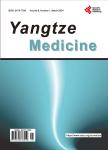Summary of the Best Evidence for the Evaluation and Management of Chemotherapy-Related Nausea and Vomiting in Cancer Patients
Summary of the Best Evidence for the Evaluation and Management of Chemotherapy-Related Nausea and Vomiting in Cancer Patients作者机构:Shanghai Pulmonary Hospital Affiliated to Tongji University Shanghai China Shanghai Baoshan District Hospital of Integrated Traditional Chinese and Western Medicine Shanghai China
出 版 物:《Yangtze Medicine》 (长江医药(英文))
年 卷 期:2023年第7卷第1期
页 面:27-42页
学科分类:1002[医学-临床医学] 100214[医学-肿瘤学] 10[医学]
主 题:Cancer Patients Chemotherapy Nausea Vomit Evidence-Based Nursing Summary of Evidence
摘 要:Objective: To summarize the best evidence for the evaluation and management of chemotherapy-related nausea and vomiting in cancer patients, so as to promote the standardized management of chemotherapy-related nausea and vomiting in cancer patients. Methods: A computer search was conducted for all evidence on chemotherapy-associated nausea and vomiting interventions, including guidelines, expert consensus, best clinical practice information booklet, recommended practice, evidence summary, and systematic review. The search period is from April 30, 2022. After the literature quality evaluation, the evidence extraction and summary of the literature meeting the quality standards. Results: A total of 16 literatures were included, including 9 guidelines, 5 systematic reviews and 2 expert consensus papers. 46 pieces of best evidence on the assessment and management of chemotherapy related nausea and vomiting in cancer patients were summarized, including 6 aspects including risk assessment and management, non-drug management, drug management, multidisciplinary cooperation, education and training, and health education. Conclusion: This study summarized the current best evidence on the assessment and management of chemotherapy-related nausea and vomiting in cancer patients. Clinical staff should apply evidence according to specific clinical scenarios, professional skills and patients’ wishes in order to reduce the degree and incidence of chemotherapy-related nausea and vomiting in cancer patients and improve the quality of care.



